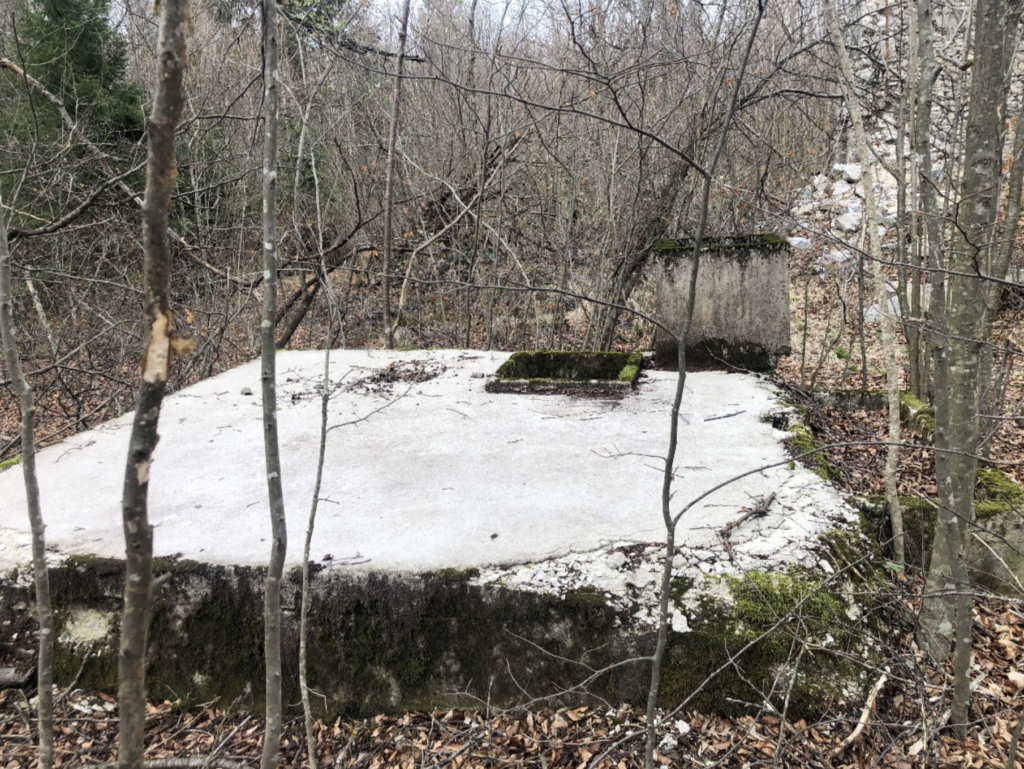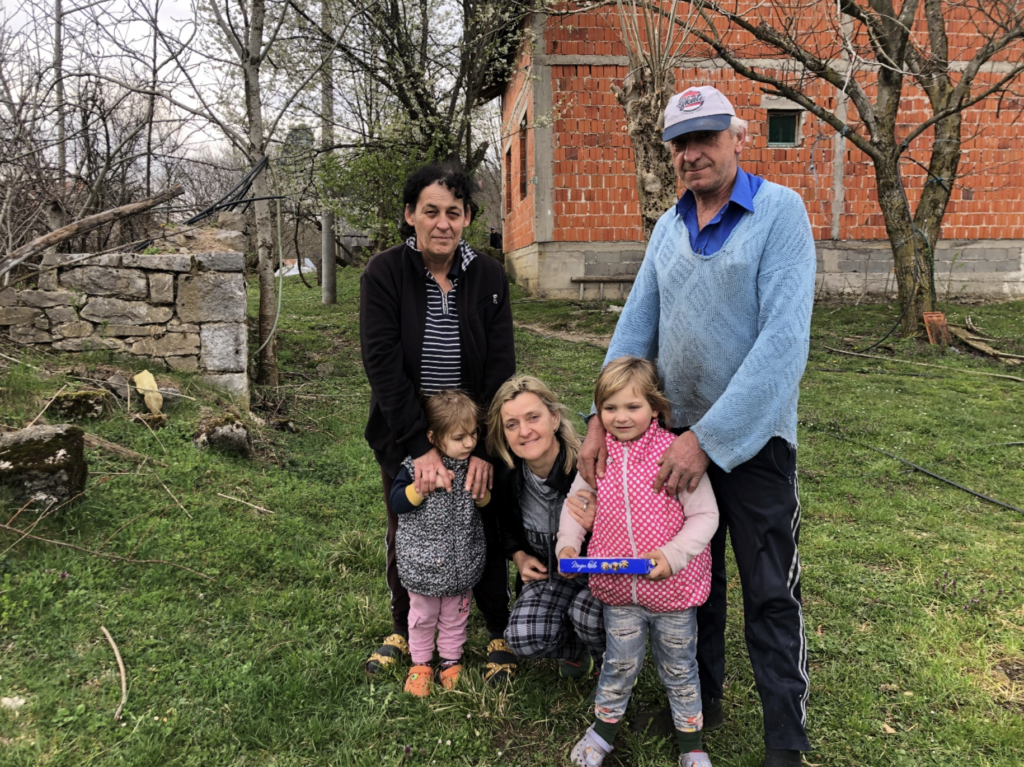By Dr Violeta Santrač (Public Institution Veterinary Institute of the Republic of Srpska “Dr. Vaso Butozan” Banja Luka)
Risovac is a remote village that was named for its abundance of wild cats, locally known as ‘ris.’ It is a hidden place in Bosnia and Herzegovina, its natural beauty preserved at the far northwestern end of Petrovačko Polje in the Grmeč mountains and a ways off the bumpy road from Bosanski Petrovac to Bosanska Krupa. Join MARGISTAR’s Dr Violeta Santrač as she begins her fieldwork and recently launched project to better understand this small, remote, and marginalised village.
Welcome to Risovac
Risovac is made up of several settlements, including Brdo (Podbiguz), Grabovac, Cerovače, Mali Risovac, and Ravni Risovac. Wood is exploited from its surrounding forests and freshwater is abundant thanks to approximately 100 springs scattered throughout the village. These springs form into sizeable streams called ‘ponornice’ that flow from the west to the east or southeast and give Risovac the specific qualities that make it a popular site for broader natural research.
Beneath the imposing stone formation of Risovačka greda, a branch of the Grmeč mountains, lie two caves. One, situated in the Vodice area at an altitude of 600 meters, was once a sinkhole. While its formation shows characteristics of sinkholes, its position resembles that of a conventional cave. The second cave functions as a perennial sinkhole and collects water even during the driest periods.
Over time, locals found capturing and storing water from the atmosphere during snow and rainfall seasons to be more convenient than constructing aqueducts, particularly during dry seasons. These alternative structures, known as ‘čatrnja,’ resemble concrete-made cisterns and remain as landmarks amongst the abandoned houses of the village.

“Not all marginalized areas are the same, but it seems that all of them are waiting for the necessary change.”
Although Risovac seems dormant today, the village shows a longstanding settlement history reaching from the Roman Empire and leaving a variety of cultural, social, religious, economic, and national burdens with its current population. Demographic trends are a primary reason for concern. The region’s last census in 2013 showed that Risovac was home to 57 citizens – a number that had significantly fallen from its 649 inhabitants in 1971. Violeta’s conversations with local political representatives emphasise the need for a renewed population count, as the number of residents living in Risovac is today assumed to lie at only 33 villagers.
Throughout recent history, Risovac’s inhabitants have encountered numerous hardships. The village’s primary concern of a dwindling population also revolves around labour migration to urban areas and failures to cultivate more fruitful living and working conditions for those wishing to stay. Three decades after the last war in Bosnia and Herzegovina, the scars of devastated infrastructure, destruction brought about by civil war, and ongoing inept governance remain conspicuously visible, as do their dependence on higher-ranking stakeholders.

Those who have remained in Risovac follow historical traditions of agriculture and forestry. In particular, the resilient and sustainable operation of small holdings marks the way of life in the village. During her fieldwork, which began on March 23, 2024, Violeta once again saw the sheer size of the task ahead in improving the state of marginalised communities in Bosnia and Herzegovina. Although this requires a significant collaborative effort backed by research and policy, she is convinced that similarities across European marginalised areas can provide insights into post-marginalisation pathways.

Next Steps: Moving Forward with Risovac
One element of these improvements is multi-platform research based on the knowledge and experiences of local residents. Violeta herself has a family history within the Risovac community and uses her background as a source of inspiration and knowledge in her work as a Doctor of Veterinary Medicine.
“I can bring my curiosity, my enthusiasm, and my wish to make a good impact, and that has a reasonable chance of being accepted. I have some knowledge in livestock production, but my deepest call is to see how beekeeping in remote, marginalised areas can be promoted and made into a sustainable livelihood.“
– Violeta
Violeta’s interest in animals, natural ecosystems, culture, and human interactions has been fostered for over 28 years by her workplace, the Veterinary Institute of the Republic of Srpska. In anticipation of her work in Risovac and the MARGISTAR project, a research plan was formulated to gather qualitative knowledge about the area and the lives of its residents. In adherence to COST regulations, Violeta has also secured a small financial grant from the Republic of Srpska.

This research plan first and foremost involves speaking with the people of Risovac. Violeta has spent the second half of March speaking with villagers – her neighbours, cousins, local government representatives, religious leaders, farmers, children, and teachers. Starting in April, the second phase of the project will involve gathering online data on Risovac. These two data sources will be classified and analysed in silico using a Large-Language Model and the help of other MARGISTAR members and onsite trainings offered by the COST Action. These first findings will then guide the remainder of the research project.
“When I say ‘I’ it is not ‘I’ but ‘we,’ as we have the good fortune of being able to access collective knowledge.”
– Violeta
A final element of the project is focused on visibility. As Violeta puts it, a marginalised area becomes less marginalised the moment it is spoken about and recognised in its status. The element of visibility will take form as a joint effort between Violeta and MARGISTAR, along with drone video material of the village that Violeta will kindly share with the COST Action.
In sum, this project aims to improve visibility, community, and connectivity in Risovac, and further social interest in the lives and challenges of marginalised communities. As her project unfolds, the MARGISTAR blog, newsletter, and social media channels will serve as an outlet to share progress and learnings from the field. Without a doubt, there will be more to come!


